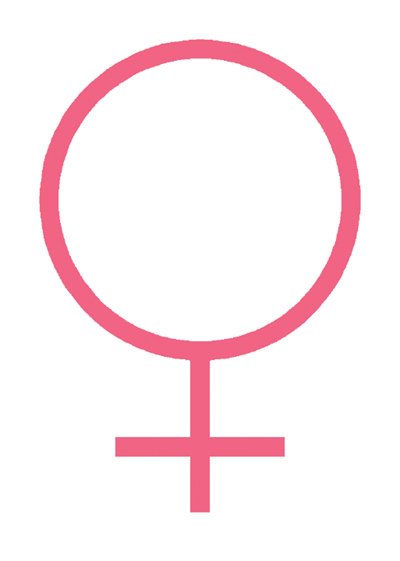Ask any woman what disease she’s most afraid of, and chances are
she’ll say breast cancer.
”
Almost everyone knows someone who did everything ‘right’ and
still got breast cancer,
”
says Dr. Victoria Seewaldt, of the Duke University Comprehensive
Cancer Center.
Ask any woman what disease she’s most afraid of, and chances are she’ll say breast cancer. “Almost everyone knows someone who did everything ‘right’ and still got breast cancer,” says Dr. Victoria Seewaldt, of the Duke University Comprehensive Cancer Center. While you can’t control your genes, there are powerful steps you can take to protect yourself. But experts say there’s a lot of confusion about what really matters.
Here’s what they want you to know …
LIFESAVING SCREENINGS
1. Clinical breast exams are as important as mammograms.
Mammograms starting at age 40 are crucial (get them earlier if you have a family history of the disease), but they’re an imperfect tool, especially in women who have dense breasts. That’s why an annual exam from a doctor is a must.
“This is especially important for detecting inflammatory breast cancer (a rare but aggressive type that can make the breast swollen and red), which often doesn’t show up on mammograms,” explains Dr. Katherine B. Lee, a breast specialist at the Cleveland Clinic Breast Center.
On the other hand, ductal carcinoma in situ (DCIS), the earliest form of breast cancer, which is limited to the milk ducts, is most often found on mammograms.
2. Breast self-exams really can help.
It’s good to do them at the same time every month, but don’t stress out if you don’t have them penciled into your planner. What self-exams do is help you become familiar with what’s “normal” for your breasts. So when something’s off, you’ll know and can bring it to your doctor’s attention.
3. Don’t panic if you get called
for a mammogram “redo” or have calcifications.
Many women over 40 have calcium deposits in their breasts, and most of them are benign.
“It’s part of the aging process of the tissue,” explains Dr. Lee. These can show up as white spots on a mammogram – they tend to be harmless if they’re large, solitary spots but suspicious if the tiny flecks cluster together in a linear pattern.
Radiologists can distinguish between them, and only the suspicious ones warrant a biopsy. Although the period between the initial and follow-up can be anxiety-filled – a common reason some women delay their follow-ups, says research at the Dana-Farber Cancer Institute in Boston – most of the time the callback turns out to be nothing.
HOW DIET AND EXERCISE LOWER YOUR RISK
4. Active women are less likely to develop and die from breast cancer.
Regular exercise has consistently been associated with a lower risk. A new study from the University of South Carolina suggests women with high aerobic fitness levels have a 55 percent lower chance of dying from breast cancer than their less-fit peers. So get moving!
5. Get your folate.
A growing body of research suggests getting enough of the B vitamin folate may help mitigate the increased risk associated with drinking alcohol. Go easy on the alcohol, but “if you have one drink daily, getting plenty of folate from your diet or a multivitamin may help,” says Dr. Claudine Isaacs, director of the clinical breast cancer program at Georgetown University Medical Center.
6. Being overweight is riskiest after menopause.
When it comes to breast cancer, it’s the postmenopause pounds that are dangerous. “In postmenopausal women, one of the most significant sources of estrogen comes from body fat,” explains Dr. Isaacs. “So if you’re overweight, you have higher amounts of circulating estrogen, which could stimulate breast cancer growth.” Losing even 10 pounds may help lower your risk.
7. Steer clear of soy supplements.
Soy contains isoflavones, which can act like estrogen in your body and potentially stimulate the growth of certain types of breast cancer, explains Dr. Seema A. Khan, of Northwestern University in Chicago. Supplements usually contain more concentrated doses of isoflavones, so experts recommend avoiding them. But soy foods – edamame, soy milk, tofu – are fine.
HOW YOUR BREASTS LOOK AND FEEL
8. Lumpy breasts don’t mean a higher cancer risk.
Many women have cysts in their breasts that come and go throughout their menstrual cycles. Feeling any kind of lump or bump can be scary, but these types of cysts don’t typically lead to cancer. Still, it’s especially important for women who have fibrocystic breasts to do self-exams and get annual exams.
9. Pain isn’t usually a sign of breast cancer.
If you have pain in one or both breasts, rest assured: It’s probably due to hormonal changes, a benign cyst, a ligament strain or another condition. More common warning signs include a palpable lump, a change in the size, puckering of the skin, nipple changes or increased warmth – changes you should bring to your doctor’s attention ASAP.
10. Women with very dense breasts are four times more likely to develop breast cancer.
“When breast tissue is dense, the cells grow and multiply at a faster rate, which means there’s more of a chance for some to become abnormal or cancerous,” explains Dr. Lee. Ask your doctor if you have dense breasts. Since mammograms aren’t as effective at detecting cancer in very dense breasts, if yours fall into this category you may benefit from getting regular MRI scans or ultrasounds plus mammograms.
YOUR ODDS
11. Breast cancer risk is NOT 1 in 8 for all women.
That stat applies to lifetime risk, assuming you live to 85 or beyond. At age 40, the average woman has a 1 in 69 chance of getting breast cancer in the next 10 years; at 50, the risk rises to 1 in 42; at 60, it’s 1 in 29; and at 70, it’s 1 in 27. Which means, statistically speaking, women are at most risk for breast cancer in their 70s and 80s – but that’s when breast cancer has the highest cure rate because women in that age group usually get a less aggressive and more treatable form of the disease.
12. A family history doesn’t mean you’ll definitely get it.
Only about 20 to 30 percent of people who develop breast cancer have a family history of the disease, and an even smaller number – 5 to 10 percent – carry a BRCA1 or 2 mutation (the so-called breast cancer genes).
13. If it’s caught early, breast cancer has a more than 90 percent survival rate in the U.S.
“The majority of women who get breast cancer in this country don’t die from it,” says Dr. Powel Brown, of Baylor College of Medicine in Houston.
At stage 0 (which means the cancer’s confined to the milk ducts) and stage I (a tumor is 2 cm or less and hasn’t spread beyond the breast), the five-year survival rate is now 100 percent, according to the American Cancer Society. Five years may not sound like much, but “if you get to the five-year benchmark without a recurrence, your prognosis for leading a long, healthy life is good,” Dr. Seewaldt says.
At stage II (the tumor is between 2 and 5 cm or the cancer has spread to one to three lymph nodes), the five-year survival rate is 86 percent.
14. Many factors affect your risk.
Family history isn’t the only thing that matters: Other factors come into play, including when you first got your period, if or when you have children and how active you are. Discuss all the details of your lifestyle and medical history with your doctor so she can make sure you’re getting the right screenings.
15. A father or brother with prostate or colon cancer can raise your risk.
These are signs of possible BRCA1 or 2 mutations. These gene mutations can run on your dad’s side, so be sure to ask if any of his female relatives had breast or ovarian cancer.
IF YOU’RE AT HIGH RISK
16. Get an MRI and a mammogram.
Doing both will increase the odds of finding small tumors in women who are at high risk. However, an MRI should only be ordered under the care of a breast specialist, says Dr. Anne Wallace, a team leader of the Moores Cancer Center breast program at the University of California, San Diego.
17. If you have the BRCA1 or 2 mutations, removing your ovaries lowers your risk by nearly 50 percent.
“Your ovaries produce hormones, so taking them out changes the hormonal mix,” explains Dr. Dahlia Sataloff, a clinical professor of surgery at the University of Pennsylvania and director of the Integrated Breast Center at Pennsylvania Hospital in Philadelphia.
18. Taking certain medications can help.
Tamoxifen and raloxifene are drugs that can block estrogen’s ability to promote breast cancer. They lower the chances of developing the disease by about 50 percent in women who carry the BRCA1 or 2 mutation, Dr. Brown says.
“These medications can be used for five years and the risk reduction continues for 10 years after stopping them,” Dr. Brown says. “Yet most women who are candidates for the drugs aren’t taking them.”
Both drugs can worsen hot flashes, and tamoxifen increases the risk of uterine cancer. But for some women, those risks are considered worth the benefit.
TREATMENT
19. Breast cancer is not a single disease.
What’s helped doctors and scientists develop more effective treatments is realizing there are different types of breast cancer with different causes. Among the primary ones: estrogen-receptor-positive breast cancers, whose growth is fueled by the hormone estrogen; HER-2-positive breast cancers, which contain a protein called HER-2/neu; and triple-negative breast cancers, which don’t have receptors for estrogen, progesterone or HER-2.
20. Chemotherapy isn’t always a given.
These days, doctors do genetic profiling on a breast cancer tumor to gauge a woman’s risk of a recurrence. If chances are low, doctors may not advise chemotherapy.
“We’re being more selective about using chemotherapy to help women avoid unnecessary toxicity and having to go through unnecessary suffering,” Dr. Wallace says.












